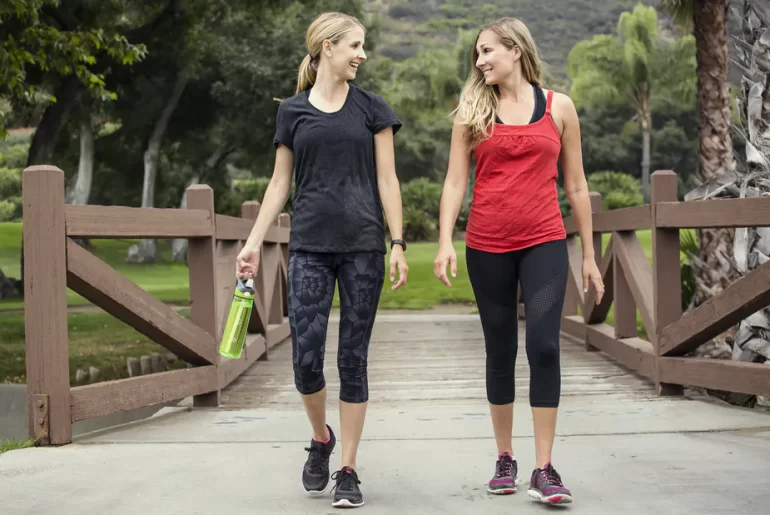Advantages of the walk to take into account
- Almost anyone can walk.
- It is an exercise perfectly adaptable to the individual; each one imposes his rhythm.
-It is not a strict discipline; on the contrary, it is about being oneself and enjoying each one of what he is and can do.
- You don’t have to take a course to learn
- Each one establishes their distance and time to travel.
- Any street, sidewalk, sidewalk or field is used for walking.
It can be done alone, as a couple or in a group, and everyone can improve with the proper technique.
- The weather is no obstacle.
- No extraordinary clothing expenses have to be incurred.
- Every day, the route can be varied to avoid monotony.
- Choose your schedule to do it.
Walking techniques:
- Maintain an upright posture, erect shoulders, an erect head, a straight back, and a flat abdomen.
- The toes should point directly in front, hang the arms loosely at the sides.
- Take long and firm steps, supporting the sole naturally and pleasantly.
- If you are going up or down hills or going at a breakneck pace, lean forward slightly.
- Maintain a deep breath (using as much lung quantity as possible), inhaling through the nose and exhaling through the mouth. Ramirez. (1990).
This simple technique allows you to regain your natural muscle tone and bring to mind feelings of security and desire by changing your attitude towards life.
recommendations
- Get a complete medical exam before starting an exercise program, especially if you are over 30 years old, sedentary or obese, or if you have risk factors for heart disease.
- If you are going to continue with a program because you are overweight, find someone prepared to review and advise you.
- If you have problems that overwhelm you, walk as a couple so as not to think about your problems.
- Do not try to be better or surpass others who have more time to walk; follow a gradual progression.
- Consider the program as an ongoing, daily project, and if you can’t, do it at least four times a week.
Wear loose cotton clothing for comfort and sweat absorption; a suitable shoe for exercise will allow you to be tireless and avoid the discomfort of ailment in the feet, knees, hips, and back.
- If you can walk on grass or surfaces that are not very hard, take advantage of them.
- Do some stretching exercises before and after the walk; stretching exercises should be adapted to the muscular structure, flexibility and degrees of tension of each one. The key to success will be regularity and moderation. The goal is to reduce muscle tension and achieve more unrestrained movement without pursuing extreme flexibility that hurts. When the stretch is correct, the feeling is pleasant.
- A program should be followed from lower to higher intensity, with a gradual, slow and prudent progression, to produce minimal stress on the joints and especially on the back, thus making it more comfortable, reducing the risk of injury.
- The more frequent you exercise, the sooner your form will improve, which is why the routine should hopefully be practiced six days a week; On the day you feel tired, get out, walk, and slow down to recover and avoid extreme fatigue, giving your body a chance to adjust.
- Don’t try to move too fast; If you feel fatigued in the first few weeks, take one more day off.
- Remember that we are physically and mentally individualized people, each with their rhythm. Each one is different in strength, endurance, flexibility, and temperament; By getting to know the potential of each one and its requirements, it is possible to build a source of health for life.
Why is walking good?
Several studies show that walking briskly twice a week can become a source of health for people who do little or no exercise. The most significant advantages of walking are that no prior training is required and accessible to most people.
benefits of walking
To maintain shape and a healthy heart, at least half an hour of daily physical exercise is recommended. Walking is a great way to achieve this goal. Most people underestimate the benefits of walking.
It is an exercise that you can easily apply to your daily life with a bit of creativity. For example, you are taking the bus not at your usual stop but the next one or parking in an area somewhat further from the workplace. With minor changes like these, you can get to “cover the record” weekly physical exercise.
